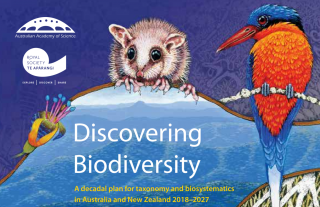On Friday, 14th, May, I went to an event at the University of Western Australia, titled “Global biodiversity hotspot with cutting-edge compute!”, hosted by The DNA Zoo.
The title intrigued me – as this is basically what Gaia Resources was set up to do from the start, way back when I founded it in 2004. The aim was to combine my interests of technology and the environment to see how we can help make the world a better place, which has become our formal mission statement in the last couple of years:
“Gaia Resources is a consultancy that responsibly delivers sustainable technology solutions to make the world a better place.”
The event was primarily aimed at an academic or research audience, although the speakers came from a few different places and from a few different backgrounds, including research organisations, industry and government organisations. The event itself was a free-flowing panel discussion, which took me on a pretty interesting journey for a Friday afternoon. Along the way, there were a range of discussions around some pretty interesting topics, and resonated around a range of our existing work in the data science and high performance compute space.
One of the threads that stuck with me was around the lack, or lag, of skillset development in the biodiversity and high performance computing space. There were a few other threads around the economics of the environment, and societal changes, but the skillset one really stuck in my head across the weekend afterwards, so I’ve focused this blog on that aspect (and there are heaps of different theories and studies around this lag out there in business management circles).
At Gaia Resources, apart from working on a wide range of interesting projects, we try to develop our skills across multiple areas, including subject matter areas (e.g. archives, biodiversity, etc), and also in the use of technology (our Amazon Web Services partnership is an example of that). However, we also need people to interface between them, which is where our Data Science unit comes in – on our team there are a mix of subject matter experts, technologists, and analysts that sit in between and help facilitate development of highly valuable solutions for our clients.
At the event, I noted multiple times that there are a range of projects or programs we are involved with around Australia to try to address that lag, such as the Business Research and Innovation Initiative grants, which we recently were successful in receiving. Providing opportunities for researchers and industry to work together often takes that external stimulus, and that’s an important thing for governments and other groups to consider if we want to reduce that lag across the board.
Another good example of this lag, and how we can help address it, is via our support for the Taxonomy Australia Decadal Plan for Taxonomy and Biosystematics in Australia and New Zealand (a link is provided below). This plan is all about accelerating species discovery in the region – so that we can discover and document this biodiversity in a generation, rather than several centuries. This is aligned so clearly to our own mission at Gaia Resources that we’ve stepped in to volunteer our services to assist Taxonomy Australia, and we’re providing support and developing some technology prototypes for them that might help with this acceleration (more on that to come in a future blog).
Taxonomy Australia’s Decadal Plan
This also is why we work with Archives around Australia. One thing that was discussed at the event was that there is a challenge of not being able to store biodiversity research data in a sustainable way – something that the Archives have managed, and that we’ve been working collaboratively with them on for some time. Looking outwards at the Archives industry, especially around Digital Preservation activities, such as the pilot we’ve just completed for Queensland State Archives (again, more on that to come in another blog) will certainly help to bring that expertise back into the biodiversity community. Those sort of linkages are often overlooked!
These examples are all part of how industry can help reduce that lag between innovation or research and implementation, how a cross-industry approach delivers benefits, and how industry can apply our technology skills to organisations that need that support to help them innovate and accelerate. In the meantime, we’ll keep on working towards trying to cross-fertilise and cross-pollinate projects and to bring our expertise to where they can deliver a real value to the people we work with – and keep on trying to make the world a better place, one project at a time.
If you’d like to know more about what we can do for your organisation, in terms of data science, technology of biodiversity information, then drop me a line, call our offices on (08) 92277309 (Perth) or 0438 718 164 (Brisbane) or strike up a conversation on our Twitter, LinkedIn or Facebook pages.
Piers


Comments are closed.